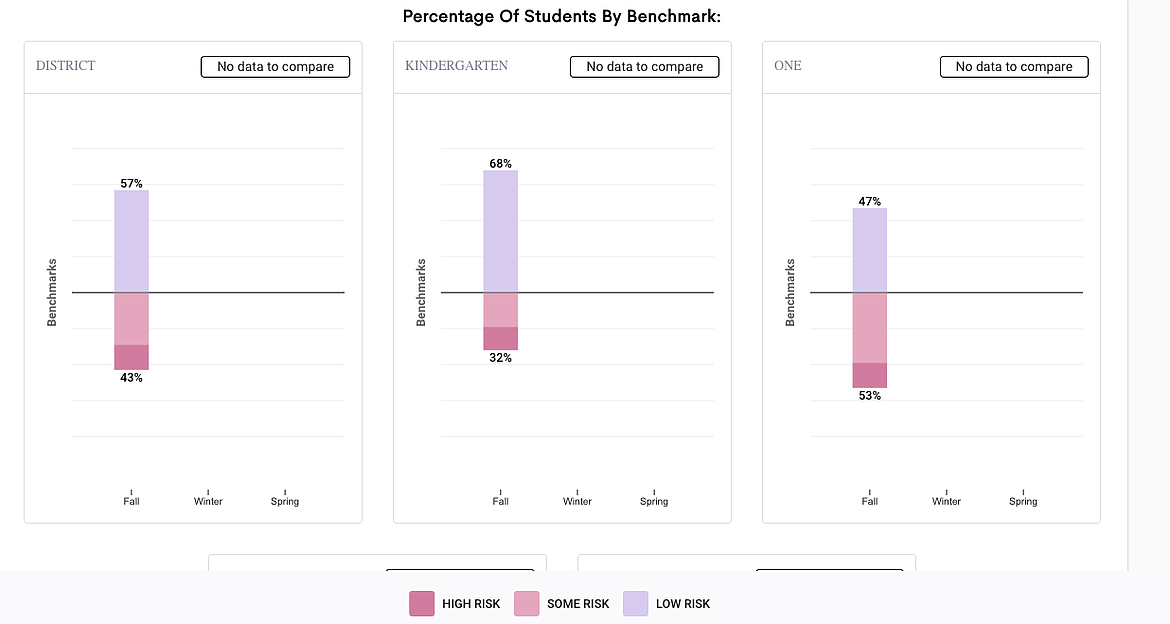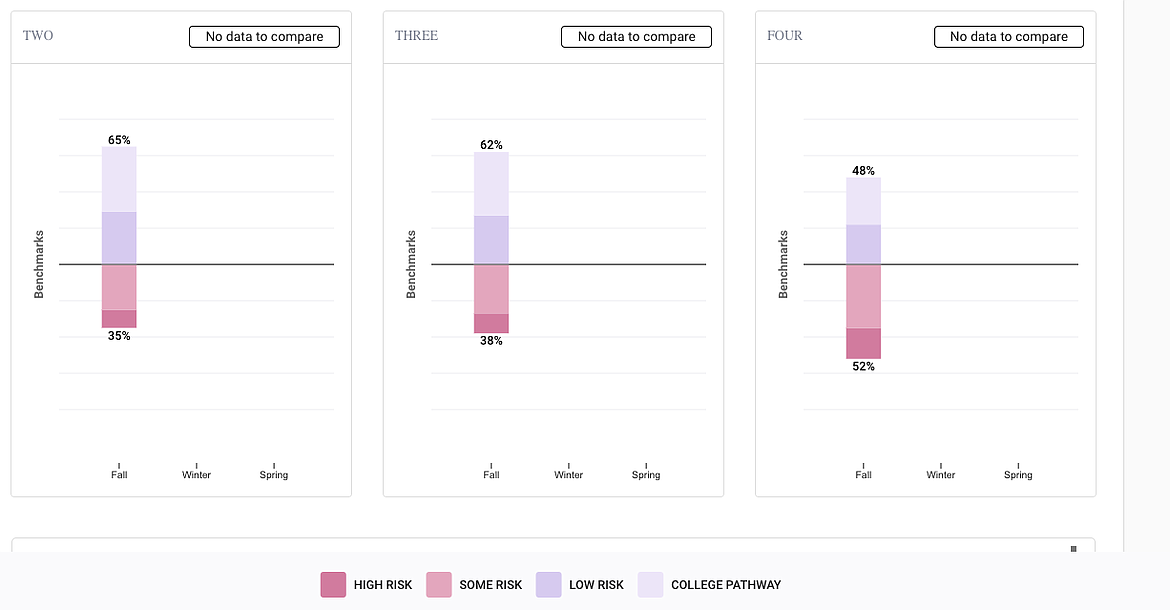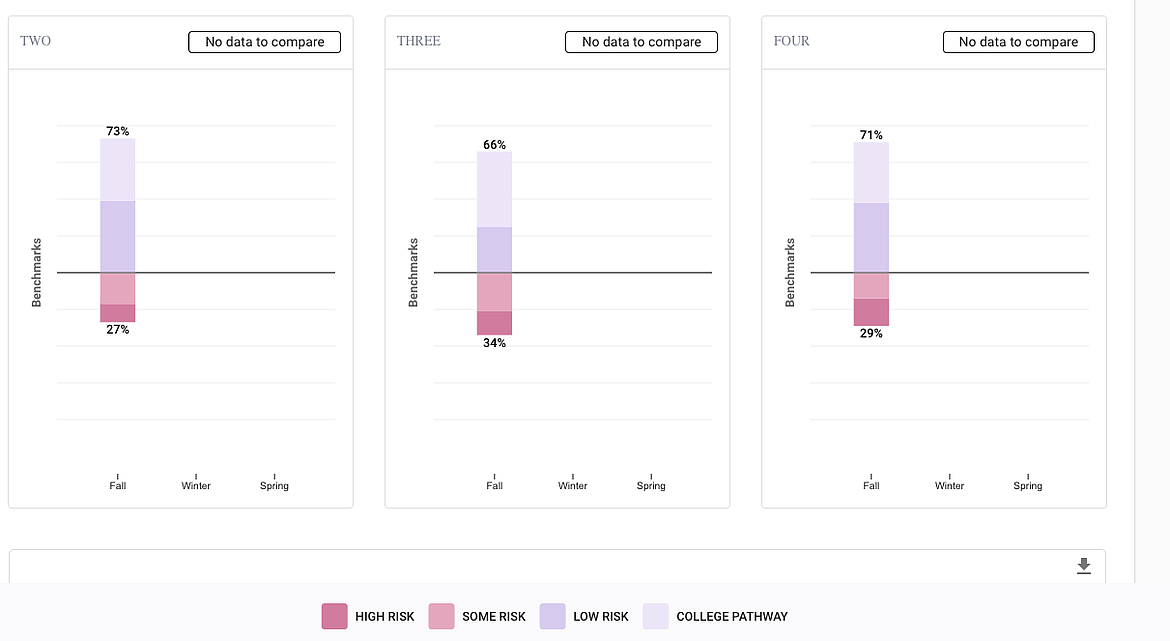Bigfork Elementary sees high scores for fall assessment
TAYLOR INMAN | Hagadone News Network | UPDATED 3 years AGO
Taylor Inman covers Bigfork and the north shore for the Bigfork Eagle and hosts News Now and other podcasts for the Daily Inter Lake. Originally from Kentucky, Taylor started her career at the award-winning public radio newsroom at Murray State University. She worked as a general assignment reporter for WKMS, where her stories aired on National Public Radio, including the show “All Things Considered.” She can be reached at 406-758-4440 or at [email protected]. | November 29, 2022 11:00 PM
Bigfork Elementary School recently completed their fall assessment and results show that most students are doing well in math and reading, not requiring any intervention assistance from staff.
Principal Brenda Clarke said the school recently adopted a new assessment platform called Fast Bridge, which they use three times a year to determine if students are falling behind and need extra support.
The assessment tests reading and math for kindergarten through fourth grade, and identifies students as “high risk, some risk or low risk” for needing intervention.
District wide results show 78% of students testing as low risk in math and 57% for low risk in reading.
When broken down by grade for reading results, kindergarten had 68% of students performing at a low risk level, first grade had 47%, second grade had 73%, third grade had 66% and fourth grade had 71%.
Clarke said they believe reading is the most important thing they teach to students. About six years ago, they adopted a reading program called Reading Mastery, which gives kids an assessment and puts them into flexible reading groups, which they call “Walk to Read.”
“Once they master that skill from that group, then they move on to the next— and so on and so on,” Clarke said. “So, it doesn't matter what grade level they're actually in, if they're a kindergartener and they're reading at a second grade level, they go to a second grade ‘Walk to Read’ group. We meet them where they're at, which is really, really great,”
For those who tested as low risk for reading in third grade, a majority of them are projected to be on a college pathway— which Clarke said is used to identify students who will most likely go to college if they continue learning at the same pace. This was only identified for students in second through fourth grades.
The school saw even better results for math when it came to their youngest students, with 85% of kindergartners and 73% of first graders identified as low risk. In second and third grades, 65% and 62% of students were identified as low risk, respectively, with the majority of students in that category to be on a college pathway. Fourth graders saw lower results in math, with 48% of students being identified as low risk and 52% being identified as some risk and high risk.
Clarke said it’s important to be able to do these assessments as often as they can to know when a student is struggling.
“If the student is below benchmark, we don't want to wait till winter to do any kind of interventions, we want to keep doing our instruction and our interventions, and then check every four to six weeks to see how that child is doing and to make sure progress is being made,” Clarke said.
She said teachers have been working hard to see students learning. They collaborate often and meet in teams once a month. She said they also consistently meet to look at data from students to ensure they are continuing to learn and grow.
ARTICLES BY TAYLOR INMAN

Blacktail Mountain Ski Area sets opening for Christmas Eve
Christmas Eve will mark the start of seven-day-a-week operations, which will continue through Jan. 4, according to a release from the ski area.

Christmas magic: Lakeside resident spreads cheer with elf character
Silver Belle is always excited to meet new people and help them get up to the North Pole to meet Santa Claus during the Journey to the North Pole cruises, which take place every holiday season on Lake Coeur d'Alene.

Christmas magic: Lakeside resident spreads cheer with elf character
Silver Belle is always excited to meet new people and help them get up to the North Pole to meet Santa Claus during the Journey to the North Pole cruises, which take place every holiday season on Lake Coeur d'Alene.







